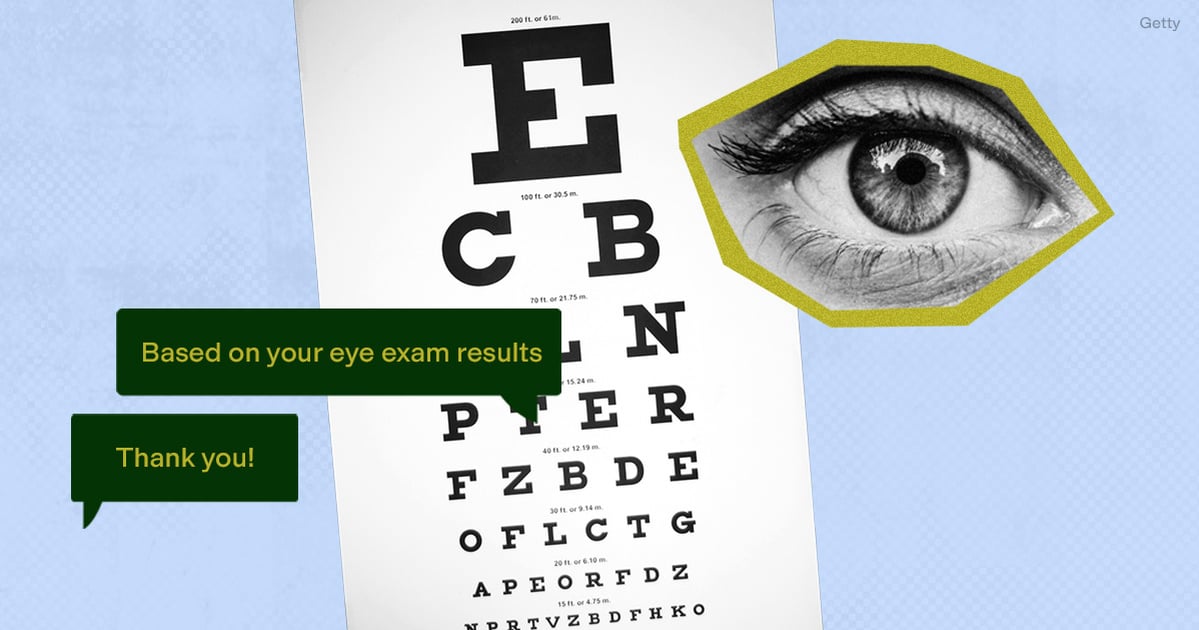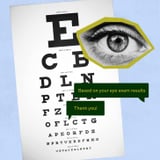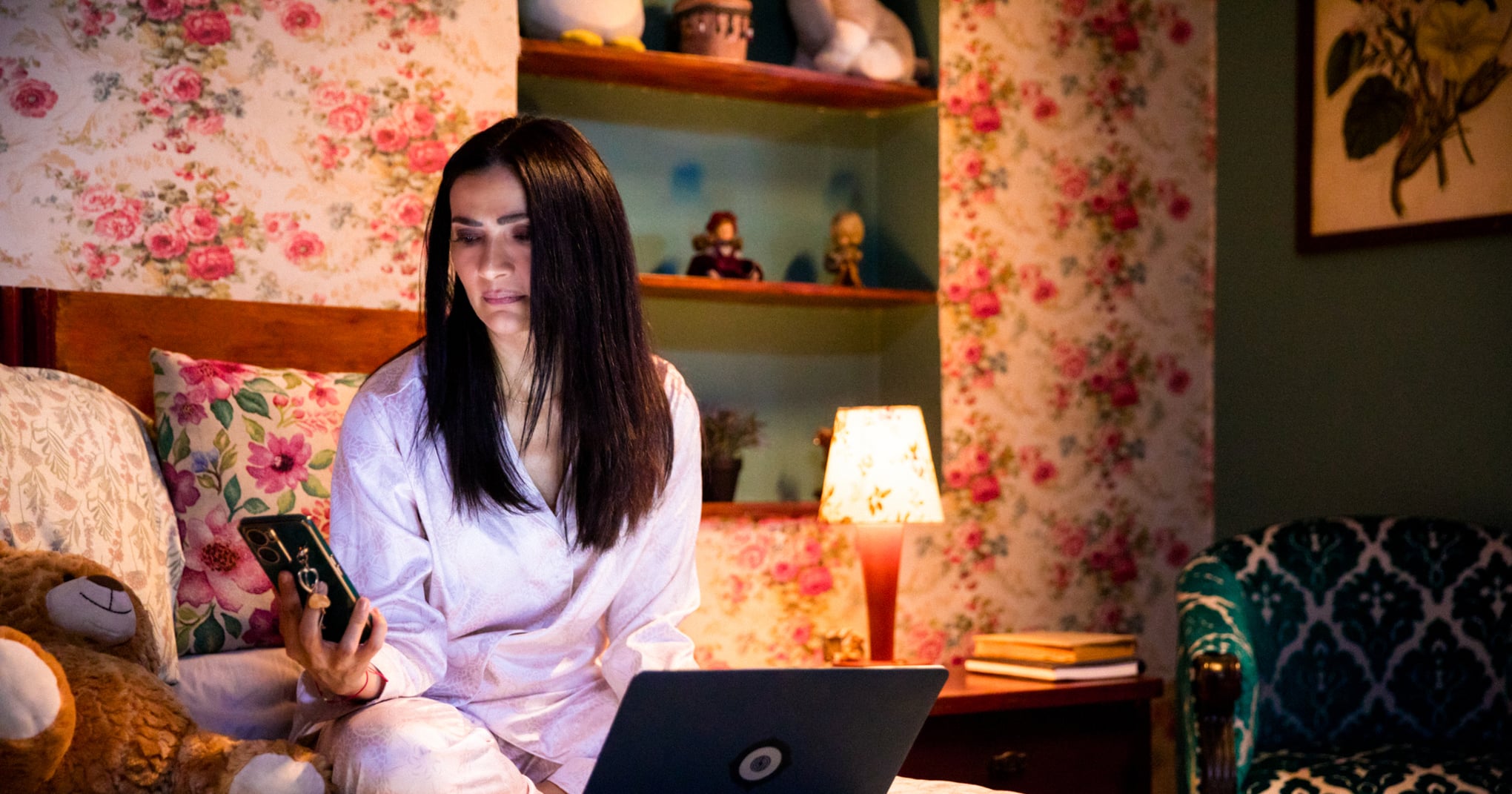It’s nearly impossible to avoid artificial intelligence (AI) today. It pops up at the top of our search engines. It’s the headline of every other news story. And now, it’s making its way into the doctor’s office. From AI mammograms to diagnosing mystery illnesses, AI technology runs the gamut when it comes to potential healthcare services.
But what if I told you that the AI revolution was coming for your eyes – that there was a world where the hours-long eye exam could be done in minutes? Or that your diagnostic eye care questions could be answered in seconds? As the country experiences a nationwide ophthalmologist shortage, can AI really help close the gap? We asked the experts to weigh in on the future of AI and eye care.
Experts Featured in This Article:
Risa Wolf, MD, is the director of the pediatric diabetes program at Johns Hopkins Children’s Center and associate professor of pediatrics.
Sally Baxter, MD, is a spokesperson for the American Academy of Ophthalmology.
Brian Boxer Wachler, MD, is an ophthalmologist and medical reviewer at All About Vision.
AI Eye Tech Is Already Making Diagnoses
Beyond fully functioning AI glasses that both are prescription eyewear and a virtual assistant, like Ray Ban’s Meta collaboration, AI is swooping in places to help diagnose certain eye conditions. Take the LumineticsCore, for example. The autonomous AI camera analyzes retina images taken with a specific camera and can easily diagnose diabetic retinopathy (a condition that impacts one in four people with diabetes) in real time. The diagnostic process doesn’t require the presence of an MD or the dilation of your eyes, explains Risa Wolf, MD, director of the pediatric diabetes program at Johns Hopkins Children’s Center and associate professor of pediatrics. The FDA approved the camera in April 2018, and Dr. Wolf’s team has been using the technology ever since. Similar technology can be used in a primary care provider’s office to diagnose other eye conditions, like age-related macular degeneration, the leading cause of vision loss for people over 50. There’s also some research being done regarding the potential usage of AI camera technology to diagnose glaucoma, an umbrella term for eye diseases that affect the eye’s optic nerve and cause vision loss. The TLDR: the future of AI healthcare is already here and in doctor offices as providers look for new ways to diagnose more quickly and efficiently.
AI Chatbots Are Also Lending a Hand
While AI cameras are saving optometrists and ophthalmologists some work, AI chatbots are also making strides in answering eye health questions. Eye doctors can use AI companion chatbots like DocsBot or EyeGPT on their website for patients to message in order to help them get information and answers to their FAQs, which can take some pressure off their busy office staff. If that feels too good to be true, 2023 research published in the journal Ophthalmology testing chatbots and ophthalmologists discovered that chatbots gave accurate answers to 200 eye care questions. The actual ophthalmologists’ answers were more human-sounding and detailed than the bots’ answers, but the AI models still answered accurately. In a 2024 study, Google’s AI chatbots Bard and Gemini scored with 71 percent accuracy on practice ophthalmology board exam questions (ophthalmologists need a 70 percent or higher score to pass the boards).
What Experts Really Think About AI Eye Care
There are pros and cons to every new technology, including AI eye care. On one hand, for people with diabetes who do not have vision insurance coverage or struggle to afford copays, AI can be helpful by reducing the need for several doctor appointments. “Historically, for patients with diabetes, both type 1 and type 2, it’s recommended that they get a yearly diabetic eye exam,” says Dr. Wolf. “But only about 50 percent of patients were getting these exams.” Many people with diabetes already see the endocrinologist between three and four times a year for a check-up to have insulin adjusted, so it’s helpful to get the annual diabetic retinopathy eye exam done in the endocrinologist’s office in minutes.
AI may also help with the shortage of eye doctors. Advancements like those in Dr. Wolf’s research can help address eye care gaps, especially in rural areas and among ethnically and racially marginalized communities (who may be more likely to get diabetic retinopathy, Dr. Wolf says).
That said, AI eye care also has its limitations. While AI-based tools have been successful at screening conditions like diabetic retinopathy, for other common eye conditions (such as nearsightedness, farsightedness, or astigmatism), AI camera photos might help with the diagnosis process but don’t replace an eye exam. And even if AI can detect an eye condition, it can’t take the place of in-person eye care to more closely evaluate treatment or eye care prescriptions, according to Sally Baxter, MD, spokesperson for the American Academy of Ophthalmology. AI, especially chatbots, can also have bias and errors.
Chatbots have been successful at giving accurate information about eye conditions, infections, and surgeries. But they don’t replace a doctor’s sense of expertise. “While it’s possible for AI to give patient-specific feedback, the medical-legal aspect of a non-doctor entity that is not the patient’s doctor giving medical advice will limit this function,” says Brian Boxer Wachler, MD, ophthalmologist and medical reviewer at All About Vision.
AI can be biased, too. According to research presented by the American Academy of Ophthalmology, AI chatbots, when asked for recommendations for eye doctors in the patient’s area, recommended female ophthalmologists less than 2 percent of the time – in reality, 27 percent of ophthalmologists in the US are women. Dr. Baxter was part of a study that used ChatGPT to identify eye care diagnoses. “While the chatbot determined the correct diagnosis in almost 90 percent of the cases, there were still inaccuracies where the chatbot created hallucinations and generated false information,” Dr. Baxter points out.
AI can be damaging for the environment, too, and more energy efficient models need to be made. Researchers estimate that even one ChatGPT session can use as much as a half liter of water to cool the computer system using the AI. Dr. Baxter predicts that there will need to be more innovation in AI models that require less energy in the future.
“Similarly, physicians and patients will have important roles to help inform which applications and use cases are the most important and highest priority,” adds Dr. Baxter.
The TLDR: AI is making its way into nearly every facet of our lives. But “sometimes just because you can do something with AI doesn’t mean you should,” Dr. Baxter says. AI should be treated as a limited resource and can be thought of as an assistant to eye doctors. It won’t be replacing your ophthalmologist altogether, but it can be nice (and beneficial) to have an extra pair of eyes.
Mara Santilli is a PS contributor, freelance writer, and editor specializing in reproductive health, wellness, politics, and the intersection between them, whose print and digital work has appeared in Marie Claire, Glamour, Women’s Health, SELF, Cosmopolitan, and more.




